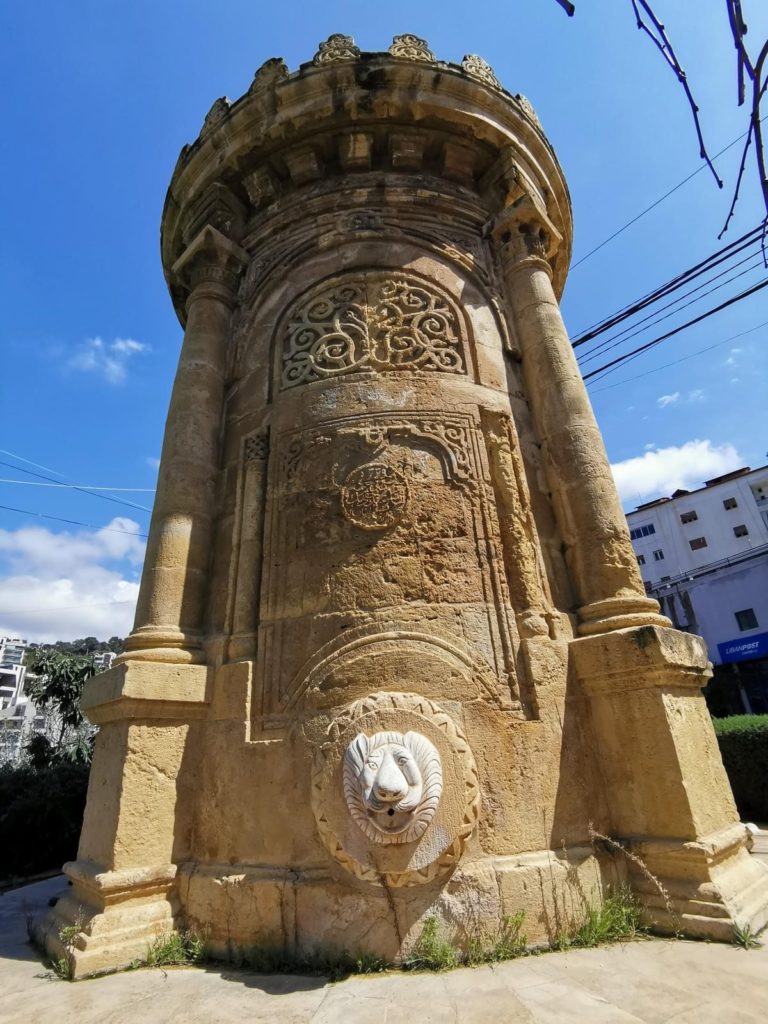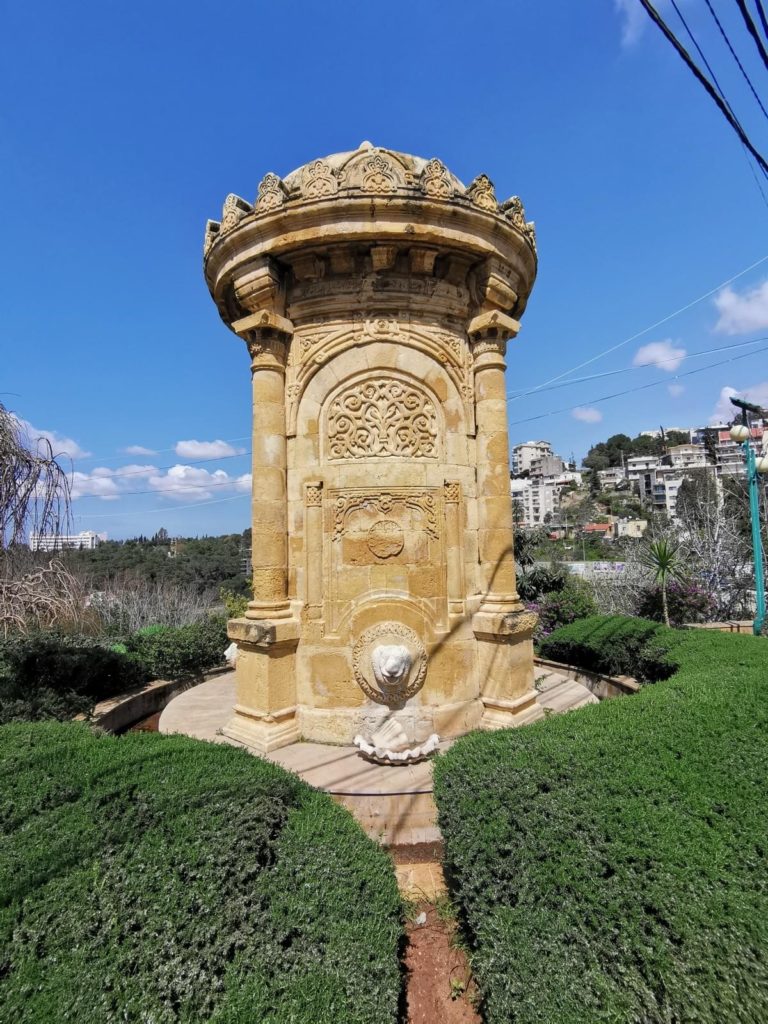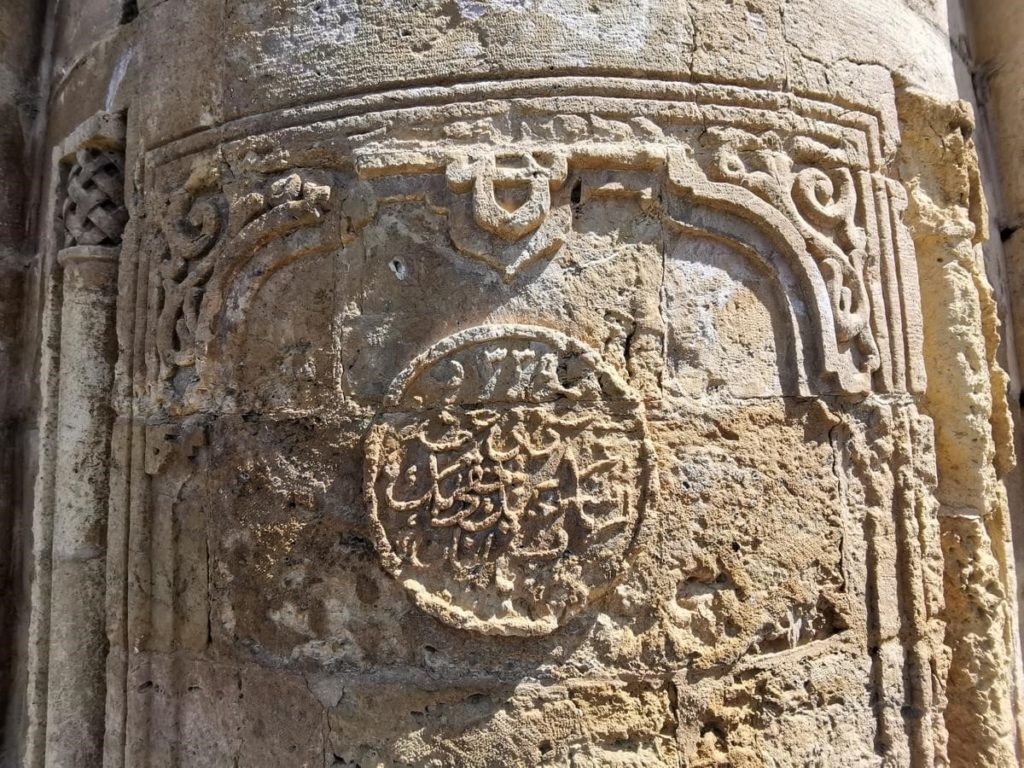Baabda’s Ottoman sebil, located at the entrance of the town, was built in 1917 by Ismail Hakki Pasha – Ottoman Governor of Mount Lebanon.
A sebil refers to a public water fountain, usually built at crossroads in order to provide free drinking water in the Ottoman empire.
Like his counterparts – Beirut Sebil and Baakline Sebil , it was built under Sultan Abed al-Hamid II (r. 1876-1909), in the context of major infrastructure projects all over the empire. Its design reflects to some levels Ottoman Neo Baroque architecture.
In 1920, after the Ottomans withdrew from Lebanon, the outraged people destroyed the 4 lion heads from which the water flows, but the sebil remained intact throughout the years, and was heavily damaged during the Lebanese civil war.
The sebil was renovated in the mid 1990’s by reinstalling 4 new lion heads, and the fountain was relocated a few meters away from its original site, facing the municipality.
A marble slab holds an inscription commemorating the construction of the Sebil, which states “Offered by Ismail Hakki Bayk, 1335 AH.”
Karim Sokhn
Tour Operator & Tour Guide




